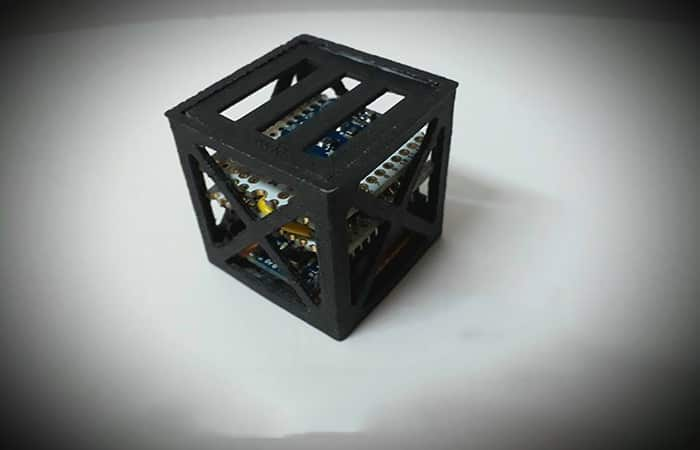An 18-year-old Indian student has designed the world’s lightest satellite which is set to be launched by the US’ National Aeronautics and Space Administration next month.
The satellite KalamSat- named after India’s former President and nuclear scientist APJ Abdul Kalam- is 3D printed and weighs just 64 grammes.
Rifath Sharook a student from the southern Indian state of Tamil Nadu, participated in a competition ‘Cubes in Space’ sponsored jointly by NSAS and I Doodle Learning, which aims to take the performance of new technology to space. The satellite made of reinforced carbon fibre polymer will be a sub-orbital flight and the mission will last for 240 minutes.
The satellite made of reinforced carbon fibre polymer will be a sub-orbital flight and the mission will last for 240 minutes.

KalamSat Source: Facebook
When piloted by NASA on June 21st, the tiny satellite would operate for 12 minutes in a micro-gravity environment of space.
“The main role of the satellite will be to demonstrate the performance of 3D-printed carbon fibre”, the Times of India quoted Sharook as saying.
“We designed it completely from scratch. It will have a new kind of onboard computer and eight indigenous built-in sensors to measure acceleration, rotation and the magnetosphere of the earth. The main challenge was to design an experiment to be flown to space which would fit into a four-metre cube weighing 64 grammes”, said Sharook.
He said the main challenge while designing the satellite was selecting the material that would prove to be the lightest.
“We did a lot of research on different cube satellites all over the world and found ours was the lightest,” he said.
His experiment was funded by an organisation called ‘Space Kidz India’, said Sharook, adding he had a great interest in space and he was also a subscriber of the NASA Kid’s Club.
